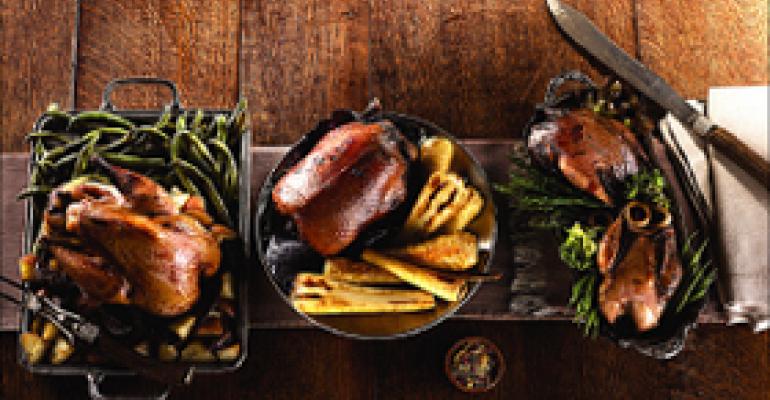In the loosest terms, game means meat and poultry that does not come from farm animals. But only a small fraction of what might be considered game is actually hunted. In fact, almost all the so-called game served in restaurants around the country is farm-raised, including quail, pigeon, pheasant, wild turkey and guinea fowl and also such large animals as venison and wild boar.
Increasingly, though, chefs are seeking truly wild game, mostly birds, for their menus. And the single source they have for it is Scotland.
U.S. federal regulations do not permit shot or trapped wild game to be served in commercial establishments because there is no system in place for the meat to be inspected.
In Scotland, however, where hunting is seasonal and strictly regulated, there are facilities that have been approved by our government for the butchering and dressing of wild game. And unlike the farm-raised game that appears on American menus all year long, the availability of fresh Scottish game birds, including wild pheasant, partridge, mallard ducks, wood pigeons and grouse, is seasonal.
The season starts in mid-August with grouse, the first of the hunt. Recently, though, the birds were in short supply, and those that were available were eagerly scooped up by chefs.
Among the U.S. restaurants featuring such items were Orsay in New York, where English-born chef Jason Hicks, whose menu included such dishes as “poacher’s broth” made with grouse. Grouse also was served braised, in a casserole with traditional bread sauce. Hicks now is using pheasant sausage and wood pigeon. His menu still lists grouse, as well as wood pigeon and red-legged partridge roasted with bacon and braised savoy cabbage.
Andrew Hamilton, whose company, Scottish Wild Harvest, imports the birds, says that for many chefs, the appeal of wild game is not only the novelty of it, but also “fashion for more organic stuff.” “Nothing is used to treat these birds or their feed,” he says. “It’s all 100 percent natural.”
Then of course, there is the taste. “It’s like night and day,” says Craig Hopson, the chef de cuisine at Picholine, a New York operation that also features game birds. “You can’t compare the flavor. The meat of the wild birds is darker, and it has much, much more flavor.”
Picholine offers five courses of game on a seven-course tasting menu, including red-legged partridge with foie gras sabayon, a wood pigeon pot-au-feu and pheasant boudin blanc. Jean-Louis Gerin, the chef and owner of Restaurant Jean-Louis in Greenwich, Conn., has a section on his menu called “the hunt,” which includes Scottish wood pigeon flambé with whisky and a marmalade of foie gras and mashed potatoes.
Scottish partridge with English peas and oats in a stout sauce is on the menu at L’Espalier in Boston, and poached wild Scottish pheasant is served with sautéed foie gras at 11 Madison Park in New York. Similarly, there’s a first course of wild game country pâté on the winter menu at Mirabelle in St. James, New York, and a Scottish game terrine at Restaurant Daniel in New York.
At the Bernardus Lodge in Carmel Valley, Calif., Cal Stamenov lists a few “indulgences” on the menu, including roasted breast of Scottish partridge with a “salmis” or ragoût of the leg, brioche and natural jus.
Though some birds, including pheasant and squab, that appear on U.S. menus are more likely to be farm-raised, for more and more chefs, when it comes to game animals,—especially partridge, grouse and mallard ducks—it’s either wild or nothing.

